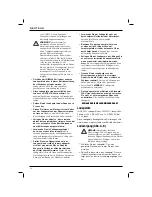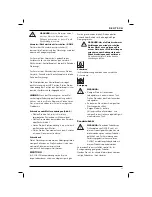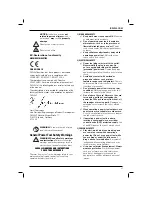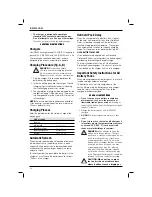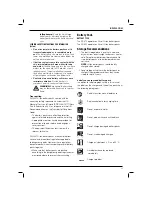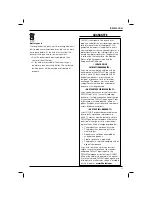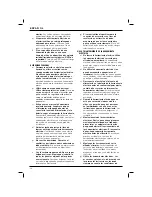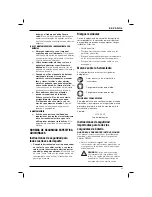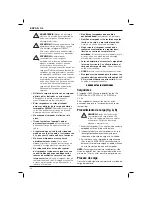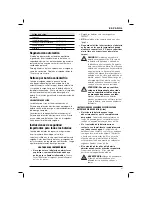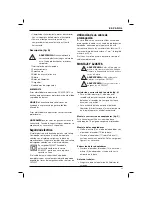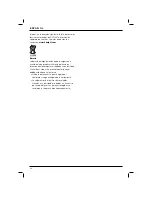
31
E N G L I S H
falling hazard.
Some tools with large
battery packs will stand upright on the
battery pack but may be easily knocked
over.
SPECIFIC SAFETY INSTRUCTIONS FOR LITHIUM ION
(Li-Ion)
• Do not incinerate the battery pack even if it
is severely damaged or is completely worn
out.
The battery pack can explode in a fire. Toxic
fumes and materials are created when lithium ion
battery packs are burned.
• If battery contents come into contact with the
skin, immediately wash area with mild soap
and water.
If battery liquid gets into the eye, rinse
water over the open eye for 15 minutes or until
irritation ceases. If medical attention is needed,
the battery electrolyte is composed of a mixture
of liquid organic carbonates and lithium salts.
• Contents of opened battery cells may cause
respiratory irritation.
Provide fresh air. If
symptoms persists, seek medical attention.
WARNING:
Burn hazard. Battery liquid
may be flammable if exposed to spark or
flame.
Transporting
D
E
WALT Li-Ion battery packs comply with the
necessary testing requirements under the UN
Manual of Tests and Criteria (ST/SG/AC.10/11/Rev.3
Part III, Subsection 38.3) as referenced in the UN
Recommendations on the Transport of Dangerous
Goods.
– The battery packs have effective protection
against internal overpressure and short-ciruiting.
– Appropriate measures have been provided for
prevention of forced rupture and dangerous
reverse current.
– The equivalent lithium content is below the
relevant limit value.
D
E
WALT Li-Ion battery packs are exempted from
national and international regulations applicable
to dangerous goods. However, these regulations
become relevant when transporting several battery
packs together.
• Make sure that battery packs are packed
according to the dangerous goods regulations as
mentioned above to prevent short-circuiting.
Battery Pack
BATTERY TYPE
The DC810 operates on 28 volt Li-Ion battery packs.
The DC800 operates on 36 volt Li-Ion battery packs.
Storage Recommendations
1. The best storage place is one that is cool and
dry away from direct sunlight and excess heat or
cold. For optimum battery performance and life,
store battery packs at room temperature when
not in use.
NOTE:
Li-Ion battery packs should be fully
charged when stored.
2. Long storage will not harm the battery pack or
charger. Under proper conditions, they can be
stored for up to 5 years.
Labels on charger and battery pack
In addition to the pictographs used in this manual,
the labels on the charger and the battery pack show
the following pictographs:
Read instruction manual before use
See technical data for charging time
Do not expose to water
Do not probe with conductive objects
Do not charge damaged battery packs
Do not use damaged chargers
Charge only between 4 °C and 40 °C
Have defective cords replaced
immediately
Charger problem
Содержание DC800
Страница 1: ...DC800 DC810 www eu ...
Страница 3: ...1 A 2 1 3 5 6 2 1 4 5 6 7 8 DC800 DC810 ...
Страница 4: ...2 B D 9 10 11 2 C ...
Страница 154: ...152 ...
Страница 155: ...153 ...


